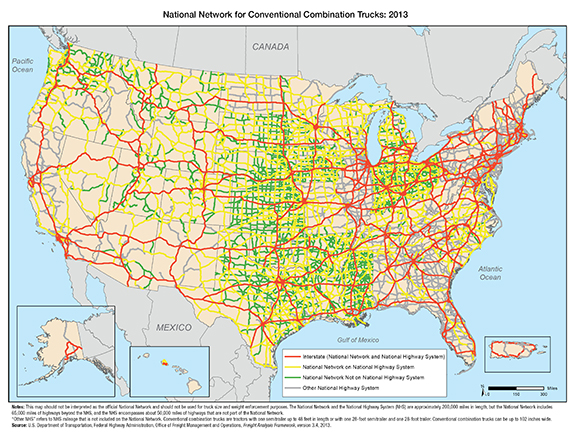Freight Facts and Figures 2013
Figure 3-10. National Network for Conventional Combination Trucks: 2013
The National Network was established by Congress in 1982 to facilitate interstate commerce and encourage regional and national economic growth by requiring states to allow conventional combination trucks on the Interstate System and portions of the Federal-aid Primary System of highways. The National Network, which is approximately 200,000 miles in length, has not changed significantly in three decades.
Figure 3-10

Notes:
This map should not be interpreted as the official National Network and should not be used for truck size and weight enforcement purposes. The National Network and the National Highway System (NHS) are approximately 200,000 miles in length, but the National Network includes 65,000 miles of highways beyond the NHS, and the NHS encompasses about 50,000 miles of highways that are not part of the National Network.
"Other NHS" refers to NHS mileage that is not included on the National Network. Conventional combination trucks are tractors with one semitrailer up to 48 feet in length or with one 28-foot semitrailer and one 28-foot trailer. Conventional combination trucks can be up to 102 inches wide
Source:
U.S. Department of Transportation, Federal Highway Administration, Office of Freight Management and Operations, Freight Analysis Framework, version 3.4, 2013.
You may need the Adobe® Reader® to view the PDFs on this page.